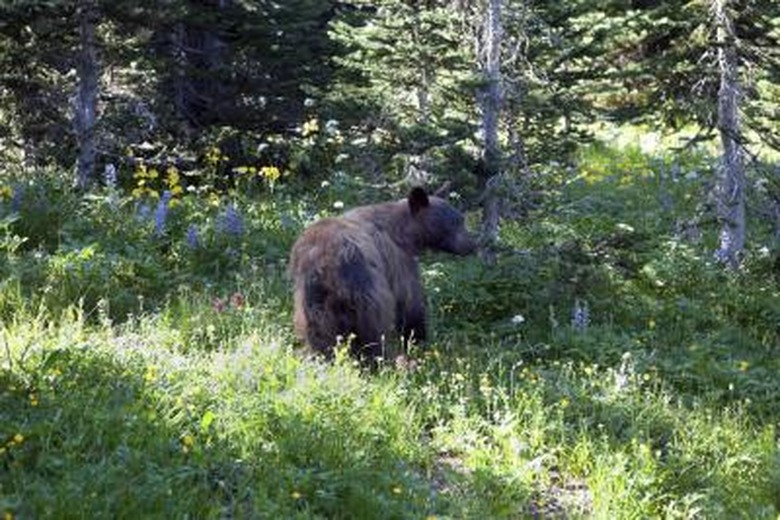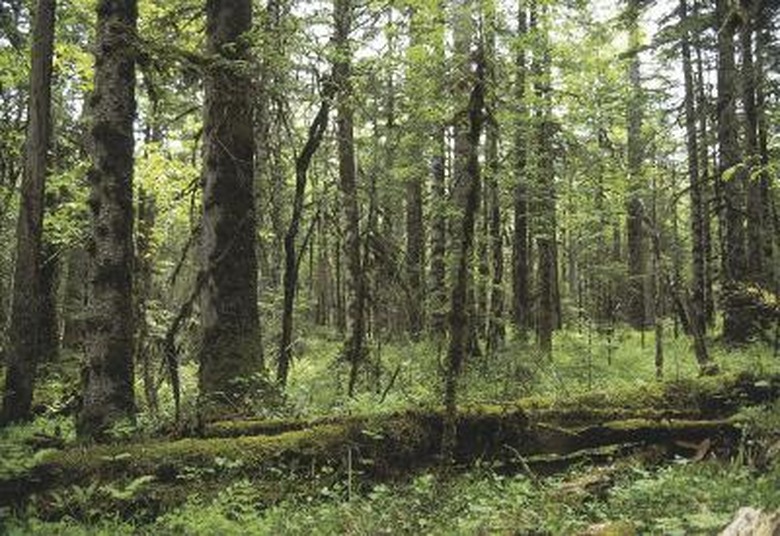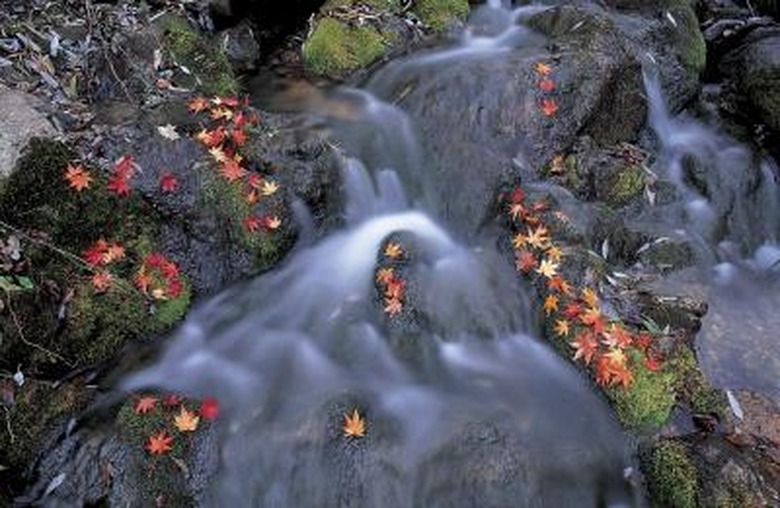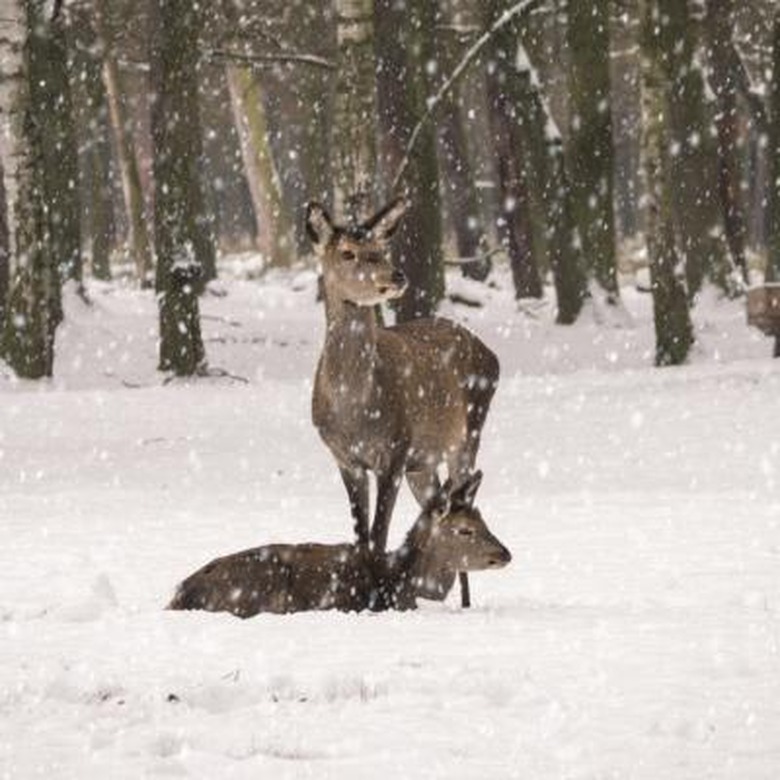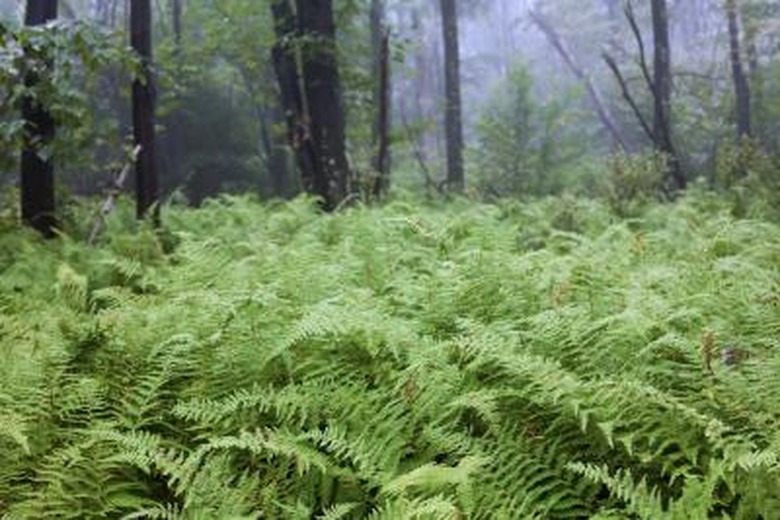Abiotic Things In The Deciduous Forest
Abiotic factors are those that are not living but which still have an impact on the ecosystem and the living elements of that system. A change in the abiotic factors of the ecosystem can have a profound influence on the entire ecosystem, for the good or for worse. In the deciduous forest, everything from the smallest plant to the largest bear relies on these forces.
Wind
The wind is a highly variable, nonliving factor that has a great impact on those that live in the deciduous forest. Strong winds fell branches and trees, beginning the decomposition process that returns nutrients captured in plants back to the soil.
More mild, less noticeable winds are no less important. Plants rely on winds to spread pollen, fertilizing nearby plants. But winds also pick up particles from exposed soil, spreading not only dirt, but any bacteria or fungal microorganisms that may be present in the soil. Long periods of strong winds can even be responsible for spreading disease through a forest.
Water
Water is nonliving, and plants and animals rely on it for survival. Whether falling on the forest plants as rain or drank by animals from a pond or slow-moving stream, life in the forest would not be able to survive without it.
Standing and slow-moving water is also an entire habitat to a number of microorganisms, such as algae. When the temperature and chemical makeup of the water is right, this can encourage the growth of organisms like algae that can potentially throw off the existing balance of the ecosystem. Large algae blooms can cover an area, blocking sunlight from plants and animals below, stifling growth.
Rainfall is also a critical factor in the deciduous forest; the constant precipitation keeps soil moist without being wet, making it one of the most fertile biomes.
Temperature
Temperature plays a key role in the balance of the deciduous forest. Warm spring months ease the plants and animals back to life, encouraging animal reproduction with the development of new leaves and plants. The warmer summer months allow these animals long enough to raise their young, often allowing them to set off on their own prepared to fend for themselves by the fall. As the temperature starts to drop, the trees of the deciduous forest lose their leaves and go into a state of hibernation. This temperature cue is critical for the animals as well, some of whom begin storing food for the winter months while others gorge themselves in preparation for hibernation.
The long winter months mean a struggle for survival during the long period when the deciduous forest is snow-covered. Plants and animals alike structure their habits and life cycles around this time.
Sunlight
All plants need sunlight to survive, and it is this basic building block of life that has formed much of the structure of the deciduous forest. Trees are encouraged to grow tall; the taller the trees, the more sunlight is available to the leaves of the canopy. Beneath these tall, established trees are a shorter layer, often close to the ground. These ferns and shrublike bushes tend to be varieties that thrive in shady conditions, as they have to survive on what sunlight makes it through the trees. In turn, many of the herbivores in the forest are species that have adapted to live on these smaller plants.
Cite This Article
MLA
Durkee, Debra. "Abiotic Things In The Deciduous Forest" sciencing.com, https://www.sciencing.com/abiotic-things-deciduous-forest-8384555/. 22 November 2019.
APA
Durkee, Debra. (2019, November 22). Abiotic Things In The Deciduous Forest. sciencing.com. Retrieved from https://www.sciencing.com/abiotic-things-deciduous-forest-8384555/
Chicago
Durkee, Debra. Abiotic Things In The Deciduous Forest last modified August 30, 2022. https://www.sciencing.com/abiotic-things-deciduous-forest-8384555/
